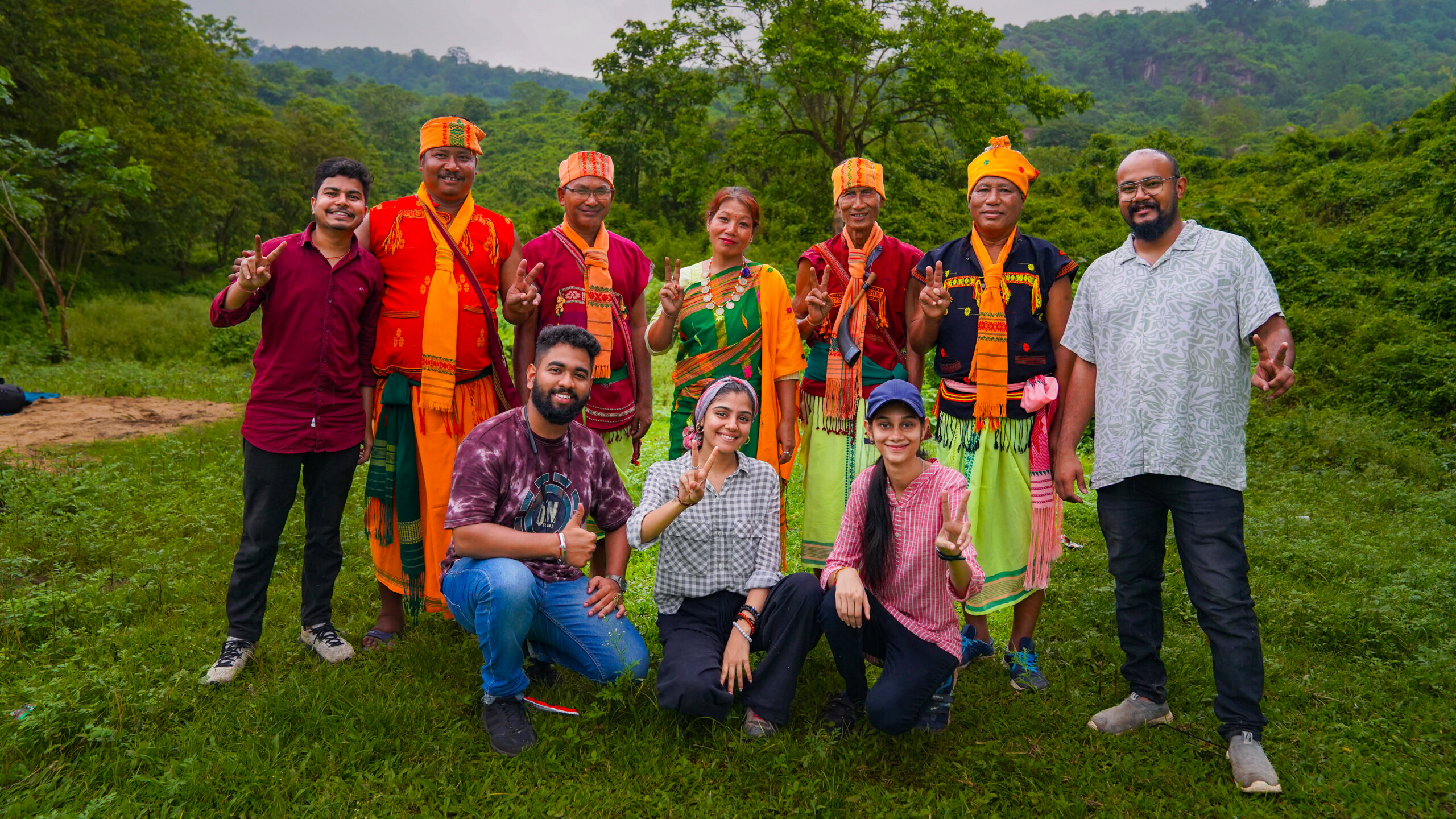
The Soulful Journey of Tiwa Music in Markang Kuchi
So far, we have had the good opportunity to meet and document the folk music of major parts of North India, and this time, the beautiful Northeast awaited us. We were to embark on a journey in search of folk music, folk wisdom and folklores of the region and were excited to start in Assam.
Assam, the gateway to the northeast as it is popularly known, truly reflects the land’s lush tea plantations, the enchanting Brahmaputra river and the vast green paddy fields in its tropical tapestry. Apart from its eye-pleasing landscapes also lies its diverse musical traditions ranging from folk to fusion to everything in between.
On our voyage through Assam’s rich folk music, we went to a nestled village within its cocoon called “Markang Kuchi” from the Morigaon district near Guwahati.
Little did we know that on our way from Guwahati on a slightly rainy day, we were about to be enchanted by the symphony of Assamese folk music.
We were warmly greeted by the gracious artist Nadiram Deuri, a folk musician from the Tiwa Tribe in Markang Kuchi. As we arrived, the surrounding greenery and the playful drizzle of rain set the perfect backdrop for our recording session with the village’s folk musicians.
Upon our conversation with Nadiram and his group, we learnt not only about the culture of Tiwa music but also about the determination to find a purpose for the community and the culture’s welfare.
In the Tiwa tribe, also known as the Lalung tribe, music beats at the core, resonating through their festivals, rituals, and ceremonies, shared Nadiram. These melodies are more than just tunes; they carry the wisdom and stories of generations which are passed down orally. Through Tiwa music’s lyrics, traditions and values are passed down to the young, teaching the importance of hard work, honesty, and respect for nature. It mirrors the Tiwa people’s daily lives, reflecting their struggles, dreams, and celebrations. With each song, wisdom travels across time, connecting the past with the present.
Nadiram grew up in a musical background since his childhood, and he started pursuing music on his own. The music of his tribe always intrigued him, and the result of that is the heritage of the Tiwa tribe that we see today. From writing songs, articles and books on the Tiwa tribe to teaching various Tiwa art forms, Nadiram became the first artist to create the first-ever cassette recording of Tiwa songs.
As the group were dressed in their traditional attire, Nadiram also told us about the attire they were wearing when performing.
The men wear Paghuri around their heads, Thagla as a jacket, Pagha around their necks, Thana as the lower and Nara as the waist tie-around.
They performed a song called “Langkhôn ”, to which the “Langkhôn Misawa” (Langkhon Dance) is performed for the “Langkhon Phuja” festival. Observed in the Ahin and Kati seasons (October-November), this song is a heartfelt prayer of farmers for a successful harvest. Accompanied by the rhythmic beats of bamboo stamps of Bijuli Bamboo named “Langkhon”, the dance symbolizes their hopes for a fruitful yield. Rooted in the agricultural practices of the Hill Tiwas, the Langkhon Puja festival centres around worshipping rituals devoted to appeasing the Ramcha God and Mother Bijuli. It is widely recognized as the ‘Langkhon Puja’ due to the prominence of Langkhons in this festive dance.
The second song, “Borot,” depicts the narrative of Khunguri, a virgin girl who fasts for the duration of the festival. This song is also known as Usha Barat. The main Barat festival is held on the full moon night in Magh Mah (December-January). Three hundred earthen chakis (oil lamps) are lit during this celebration, and young groups of boys and ladies sing the happy Godalboria hymn. This Puja is a kind of worship dedicated to the purity of a virgin.
With instruments in hand, the talented musicians of the group delighted us with snippets of their craft. United by a shared passion, they worked together to preserve and promote Tiwa culture, guided by Nadiram ji, their Guru. Accompanied by Mukunda Teron, 71, on the soothing Bansuri & Phêmba (Assamese wind instruments), Arun Chandra Patar, 38, on the beats of the Khrám (Assamese drum), Manjumoni Konwar, 38, on the vocals, the rhythmic songs of Tiwa tribe all composed by Nadiram Deuri were weaved together beautifully.
Nadiram ji, a true artist at heart, aimed to empower his musicians to achieve recognition and acclaim, not just locally but on a larger scale. His dream was for folk artists to embrace their traditions and find stability through their art, inspiring others to follow suit and keeping the flame of folk music burning bright.
A whole new culture greets us wherever we go, and that day was no exception. The musicians were all decked up in their vibrant costumes, ready to enchant us with their seasoned melodies, presented with such humility and grace.
They were gracious enough to share their tales with us, even down to the traditional clothing, festivals, and ideals they hold dear. They were with us, present in the moment from camera rolling to action to cut.
Isn’t this what we learn from the beginning? To smile through it all, to make others feel attuned to our culture or music, and to share what we can with our fellow travellers on our voyage. As passengers on this musical train in Markang Kuchi, we witnessed their musical diversity and tradition.
They came, they smiled, they performed, they smiled again, and they left us all feeling grateful to have met them.
– Meghal Sharma (Research Fellow)
